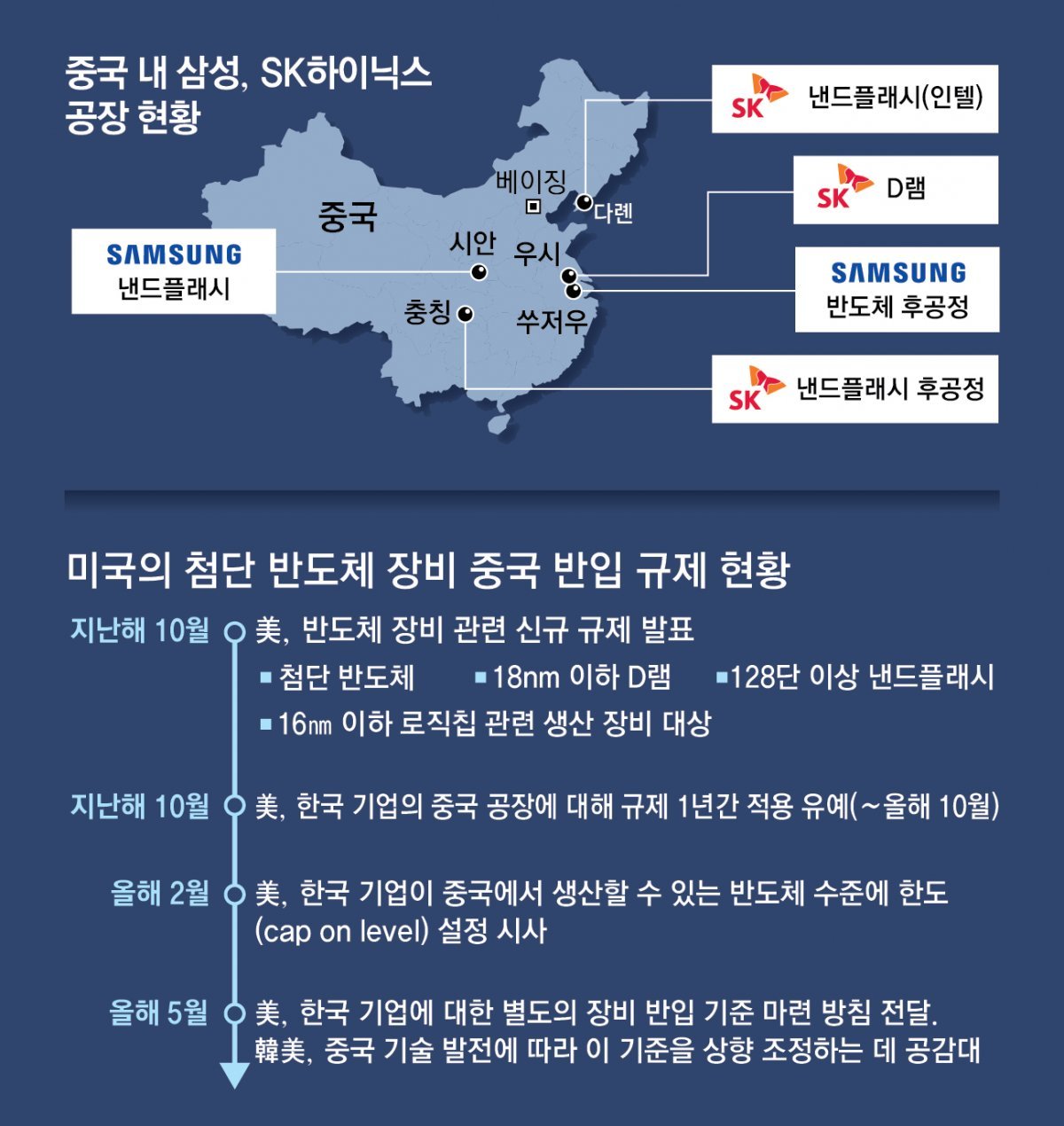U.S. extends semiconductor equipment regulation by one year instead
Delivery of separate standards to Korean-Taiwanese companies
“Factory operation is possible, uncertainty disappears”
Green light for Korean semiconductors when long-term moratorium agreement
It is reported that South Korea and the United States approached the opinion that they would prepare separate equipment import standards for Samsung Electronics and SK Hynix’s Chinese semiconductor factories, but raise the standards according to the development of Chinese technology. Currently, the importation of equipment necessary to produce semiconductors above a certain level is fundamentally prohibited, and regulations for Korean companies are suspended for one year until October of this year.
If South Korean and US authorities come up with measures to improve regulations in this direction, it is expected that the suspension of regulations on importing semiconductor equipment from the two companies’ Chinese factories, which ends in October, will be extended for a longer time. In addition, there is an expectation that business uncertainty will be alleviated as factories can also undergo qualitative upgrades.
It was reported on the 9th (local time) that the U.S. Department of Commerce informed South Korea that it would prepare separate equipment import standards for Korean and Taiwanese semiconductor companies. Instead of simply extending the suspension of restrictions on imports of semiconductor equipment from China, which was temporarily applied until October, by one year, it has changed its direction. In this case, equipment with a certain technical level or higher is regulated from being imported into China, but equipment with a lower level can be imported without a separate review by the Ministry of Commerce.
In particular, it is known that the South Korean and US authorities agreed on a plan to raise the standards for importing semiconductor equipment that will be applied to domestic companies in the future depending on the speed of development of Chinese semiconductor technology. An official from the semiconductor industry said, “I know that there is little disagreement about the need to change the standards for importing semiconductor equipment that will be applied to domestic companies depending on the situation in the Chinese semiconductor industry.”
However, it is known that the South Korean and U.S. authorities are currently discussing the separate standards to be applied to domestic companies. A source said, “Specific issues, including separate standards, have yet to be concluded.”
The government has been asking the U.S. to take fundamental measures to resolve the uncertainties of domestic companies, such as a multi-year grace period beyond the one-year grace period. An official from the Ministry of Trade, Industry and Energy said on the 10th, “There will be little chance of a sudden equipment supply failure after October (when the regulatory grace period ends).” ”he explained.
Previously, Minister of Trade, Industry and Energy Lee Chang-yang also said at a press conference on the 9th, “The US semiconductor law guardrail (safety device) is a problem related to the management of our semiconductor companies in China.” He added, “We are conducting consultations in a direction that will be more helpful to us in the process of preparing the draft from the US side so that our companies will not be damaged by technological upgrades or within a limited scope.” There is,” he said. It is a positive outlook for the long-term extension of the postponement of semiconductor regulation, as well as for opening up the possibility of technological upgrades for domestic semiconductor companies.
Amid sluggish semiconductor exports, if Korea and the U.S. agree to a long-term suspension of semiconductor equipment import restrictions, it is expected that a green light will be turned on for domestic semiconductor companies. The domestic semiconductor industry said, “It is cautious to mention it because a specific decision has not yet been made,” but also evaluated, “It is positive that uncertainty can disappear when it is actually implemented.”
An official from the semiconductor industry said, “In the worst case, it is positive that discussions are being made in the direction of allowing the factory to operate as much as possible in a situation where there was talk of having to withdraw the factory from China.” Another official also said, “Since many of the equipment for the semiconductor process is imported from the United States, if this measure is successful, it is likely that the Chinese factory will be able to upgrade its technology.” The uncertainty disappears,” he said.
However, it is expected that the tug-of-war will continue over specific import regulation standards. In October of last year, the U.S. made it necessary to obtain separate permission when selling equipment that produces logic chips of 16 nm or less (nanometer, 1 nm is one billionth of a meter), DRAM of 18 nm or less, and NAND flash with 128 layers or more to China. Separate standards for domestic companies are likely to apply higher limits.
Washington =
Sejong =
Source: Donga
Mark Jones is a world traveler and journalist for News Rebeat. With a curious mind and a love of adventure, Mark brings a unique perspective to the latest global events and provides in-depth and thought-provoking coverage of the world at large.
